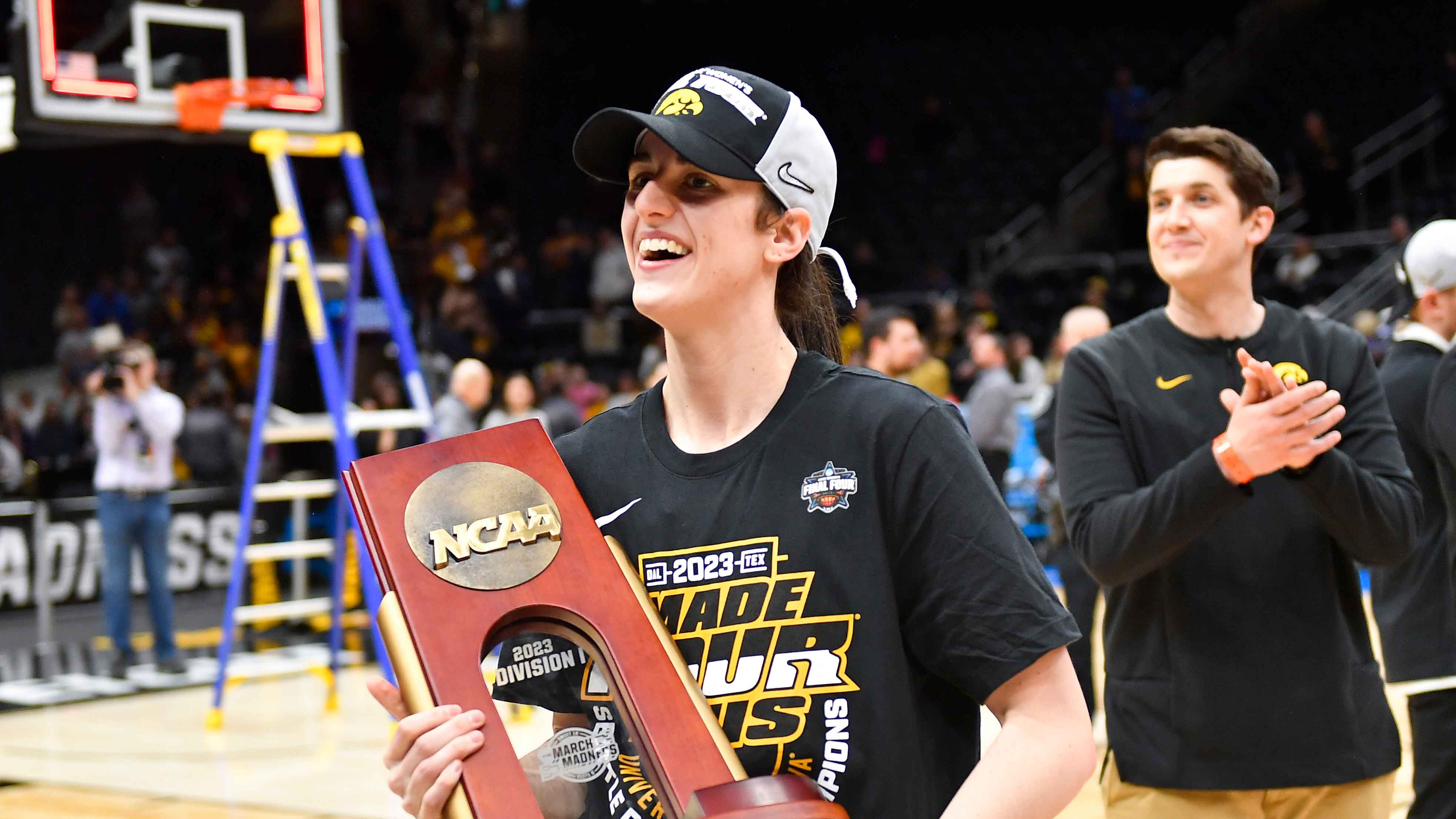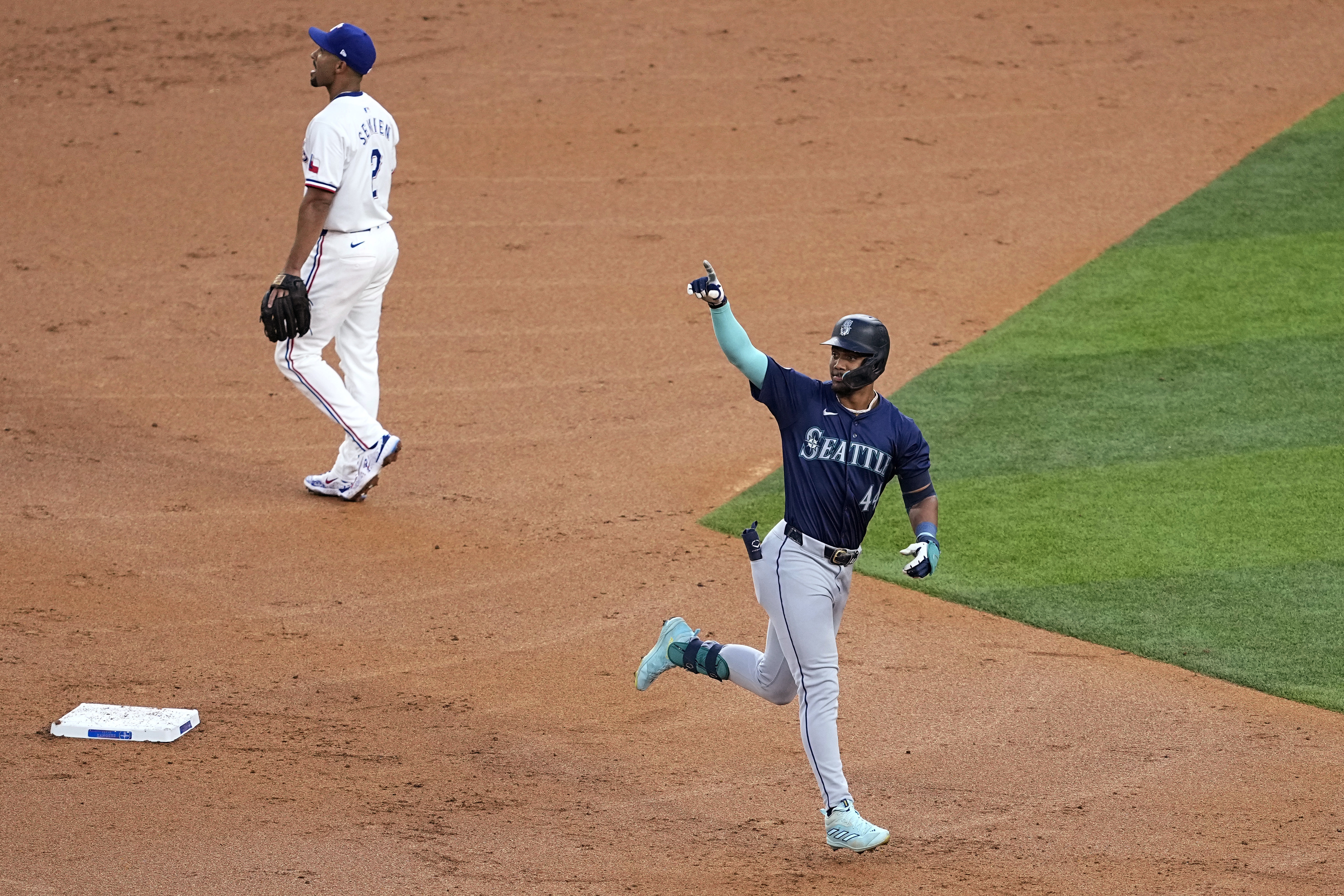Popeye Jones didn't just kick around the NBA for 11 hard-nosed seasons. He threw some elbows, too. How else would the former power forward and current Dallas Mavericks assistant coach hold the franchise record of 28 rebounds in a single game?
Yet, for all his years of hardwood labor, from his small-town Tennessee roots to NBA workhorse for six teams, Jones never faced the gripping decisions his two supremely talented stick-wielding sons do now.
Justin, a strong, compact and gritty 18-year-old right winger, and Seth, a tall and lanky, smooth-skating, 14-year-old defenseman, inherited their father's athleticism and work ethic, if not, astonishingly enough, his passion for basketball.
"At the beginning, when I saw how involved they were in hockey once I came home from that first year playing in Washington, I got mad a little bit," Popeye said, only half-joking. "I was like, 'What's going on here? What about basketball? You guys are at the hockey rink every day.' "
The brothers might one day eclipse their dad's accomplishments in the NBA with their own careers in the NHL. To get there, however, will require a circuitous journey steered by unique sacrifice and life-altering decisions choices as exhilarating as they can be overwhelming.
Their paths will differ, but one thing is certain: Both boys -- Justin, an intensely focused high school junior, and Seth, an extraordinarily composed eighth-grader and a top-five prospect in his age group in all of North America -- must leave home in the fall to follow their hockey dreams.
"I'm not sure I will ever be ready for that," said their mother, Amy, of the pending departure of her eldest and middle sons. "But, when your children have goals and dreams all you can do is support them if you feel they are ready."
Sports Connection
Connecting you to your favorite North Texas sports teams as well as sports news around the globe.
The big decision for Popeye Jones as a forward at Dresden (Tenn.) High School was whether to accept a scholarship to Lamar University or Murray State, or go to an NCAA Division II school where he could also play baseball.
He chose Murray State in Kentucky, played four seasons, and made it to the NBA.
That's generally how athletics works in the United States. Kids develop in their sport in high school and dream of earning a college scholarship and getting to the pros. Hockey, with its roots in Canada and no NCAA equivalent at Canadian universities, is a different animal.
NHL training for elite teenagers begins in the major junior leagues such as the Western Hockey League -- the top level in the Canadian Hockey League system and the dream destination of boys north of the border.
Those leagues are regarded as the pinnacle of NHL training and development because of the top-echelon competition, coaching and NHL-like scheduling.
Players are drafted in the year of their 15th birthday, placed on a team's protected list and then typically join their WHL clubs at age 16, 17 or 18, depending on their pace of development.
Seth, already 6-foot-2 and 170 pounds, is the captain of his Dallas Stars Bantam Major Tier I team, an elite traveling club for players born in 1994. He is considered to be a top-five selection, if not No. 1, in this summer's WHL Draft.
To ensure his development continues at the most competitive level, Seth's first decision is upon him. In the fall he will either join an elite-level club team in Denver, where he's fond of the coach and can move in with family friends; or he'll pack for Detroit, live with a host family, begin high school and play for the powerhouse club team HoneyBaked (yes, the ham company), which routinely attracts top prospects from around the country.
"It's pretty crazy," said Seth, who turns 15 in October. "Just the thought of moving away from home is pretty tough. The WHL, I heard it's a really great league. They're trying to get you to the NHL as quick as you can. I've had some WHL people come up to me and want me to play for them, so I'm just listening and taking it all in right now."
Justin's path is more cut-and-dried. A late bloomer because he didn't start playing hockey until age 10 when Popeye joined the Denver Nuggets, the tough-minded forward has added more goal-scoring to his edgy, high-energy game that he compares to feisty Stars winger Steve Ott.
One of the top forwards on his Dallas Stars Tier I 18-and-under team, Justin was bypassed at an earlier age for the WHL Draft. He's now in pursuit of a college scholarship to a major Division I school.
To enhance his chances and further hone his skills playing against this country's elite, Justin is set to leave home in the fall to join a team in one of the burgeoning American amateur junior leagues, the United States Hockey League or the North American Hockey League, which is headquartered at the Dr Pepper StarCenter in Frisco.
"We had two options, either major junior (in Canada) or stick around until you went to college," said Stars center Mike Modano, who moved away from his hometown, Livonia, Mich., at age 15 and played in the Ontario Hockey League, the WHL's counterpart for players from the eastern regions of Canada and the United States.
"There was none of this Tier II juniors and USHL," Modano said. "Now there's tons of options, and you still have your college eligibility if you don't want to go to Canada."
Seth, with 33 points (12 goals and 21 assists) in 31 games before ramming his right wrist into the boards and breaking bones last month, is giving college serious consideration, even though he hasn't reached high school yet. Playing in the WHL forfeits NCAA eligibility.
"For ultimate hockey," Modano said, "I still feel major juniors in Canada, if you want to get to the NHL, your odds are better."
These are the decisions Seth is rapidly encountering.
"It's really heavy for a 14-year-old to decide what he wants to do with his future," Popeye said.
No choice is necessarily right or wrong, good or bad.
Seth can go to the WHL and if he excels, rapidly propel himself into the NHL. Or, he can continue to develop in high-level club hockey such as in Detroit or in the American junior leagues like his brother and use those to springboard to a Division I college.
Top-tier American college programs are gaining ground on the Canadian junior leagues as excellent training grounds, and they're even competing for the same players by recruiting U.S. players at a younger age.
The college route does have its proponents, even among Canadians.
"The (Canadian) major junior leagues have their success stories to lean on. You just rarely hear about the failures so they paint a great picture," said Canadian-born Stars goalie Marty Turco, who readily admits that he would have played Canadian major junior hockey had he been drafted. He wasn't and instead went on to star at the University of Michigan. "The picture of the NCAA is if you don't make the NHL, you have your education."
Another potential option, and one the Jones family embraces, is the prestigious, by-invitation-only U.S. National Development Program in Ann Arbor, Mich. In the NHL, American-born overall No. 1 draft picks are rarer than hat tricks, but the program, designed for 17- and 18-year-olds, has produced two top selections in the past three drafts.
St. Louis defenseman Erik Johnson jumped from Ann Arbor to the University of Minnesota, where he played one season before being drafted No. 1 overall by the St. Louis Blues in 2006. Patrick Kane went from Ann Arbor to the OHL team that drafted him in 2004. The Chicago Blackhawks made him the No. 1 pick in 2007.
An effortless skater and crafty puck-handler, Seth runs the power play and penalty kill, logs heavy minutes and seems to have an innate sense and vision on the ice the way an excellent point guard might on the basketball court.
"He reads and anticipates the play before it actually happens or as it is happening," Amy said.
Seth models his game after exceptionally skilled and intelligent Detroit Red Wings defenseman Nicklas Lidstrom, a 6-1, 193-pounder. That might change. Seth is projected to grow to perhaps 6-5 and 220 pounds. His coach, David Fry, said he eventually sees Seth more in the mold of imposing Anaheim defenseman Chris Pronger.
Seth's accelerated skill level and projected size have coaches and scouts from various junior leagues and even agents called "family advisers" for young hockey prospects providing him information and guidance to help with his decision-making process.
Although soon he won't be living under his parents' roof, Seth said he knows whose number will cross his cell phone the most.
"They'll be a big part of my decision," Seth said of his parents. "They'll guide me. They obviously know what's best for me, so I'll listen to them while taking everything in."



